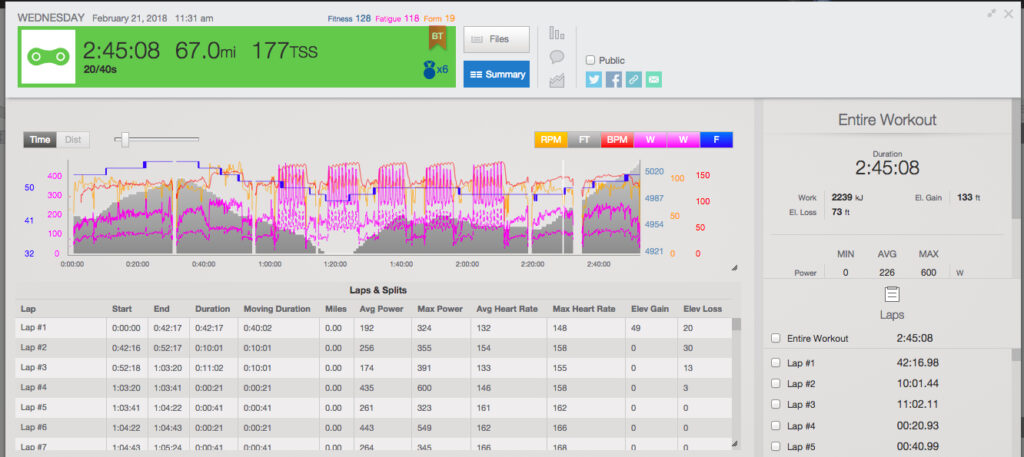Everyone knows or has been the athlete who dives head-first into volume and intensity, only to end up tired and slow come race day. In my last article, I touched upon the physical and mental benefits of a “training camp.” But on the opposite end of the spectrum comes a possibly more important phase—what you do day in and day out. How do you plan your recovery and return to a consistent and sustainable training schedule after a big block of training? Let’s take a look.
After returning from a month on the road with UnitedHealthcare Pro Cycling’s early season training camp (and my first race of the season at Oro y Paz), it was clear I was going to need some recovery. Beyond the physical aspects, I was craving a mental break and a “return to normalcy.” Having meals, bottles and ride food prepared, laundry done, and daily massage gives you ample time to rest, but after a while, it can leave you feeling like a robot.
Recovery
So when I got back to Colorado, I spoke with my coach (David Wenger at Durata Training) about where I was at physically. I was given some guidelines for recovery, along with the freedom to plan my own training around the day-to-day activities I’d missed during the past weeks.
Physically, this meant a couple of recovery rides, a day off, an easy MTB ride, and a couple of 3-4 hour low-intensity endurance rides. I also made sure to stock up on sleep and some high-quality foods not containing rice! An easy week is going to look different for different athletes, but in general, there should be a big reduction in intensity and a moderate reduction in total volume.
Mentally, I wanted to pack in some quality time with my girlfriend, puppy and friends back in Colorado. The length of the intense period of training will have a big effect on your mental recovery demands. Just remember that it’s ok to put training on the back burner for a period of time to allow that desire and motivation to come back.
For me, that meant a rare non-cycling-related trip. My girlfriend Reese and I found a dog-friendly Air BnB in Denver and packed up the car for a last-minute getaway. After a weekend of exploring some new cafes, breweries, and restaurants, I was back to feeling like a normal human and ready to start thinking about training again.
Back to Work
Once you’re recovered both mentally and physically, it’s time to get back into the swing of things. Training camp was a lot of low-intensity and high-volume aerobic base work, I knew I would be dialing up the intensity at home.
Living at 5,000 feet provides extra stress on the body, so I prefer to work mostly in shorter two and three-day blocks when I’m home. If the weather is cooperative, which is rare in the spring, I try and plan Mondays and Fridays as easy recovery rides or days off. Not having a normal 9-5 job, there’s no real need for this, but it can be comforting to have some regularity. Otherwise, I tend to forget what day of the week it is.
Like most of us, I also like to be effective with my use of time. I’m a big believer in the on/off type efforts like 40/20s, 20/40s, and 20/10s for periods of 6-10 minutes. Training is a lot steadier than professional road racing, and these efforts do a good job of mimicking the repeated “surges” that take place in a race. With a big base under my belt, the rest of February was centered around bringing back that “punch” I need for goals to come.
Here’s a file from a 20/40 workout I did:

When I’m at home, a typical week of training will consist of 2-3 shorter interval days, 2-3 longer endurance days, 2 easy days, and 1-2 off-the-bike gym sessions.
Remember, consistency is the key to success. While big blocks of training or a team camp can take you to the next level in fitness, it’s what you do day in and day out that’s going to count come race day. Hopefully, this helps you stay on track or bounce back after an exceptionally difficult training period. Thanks for reading, and check back in for more articles throughout the season!







